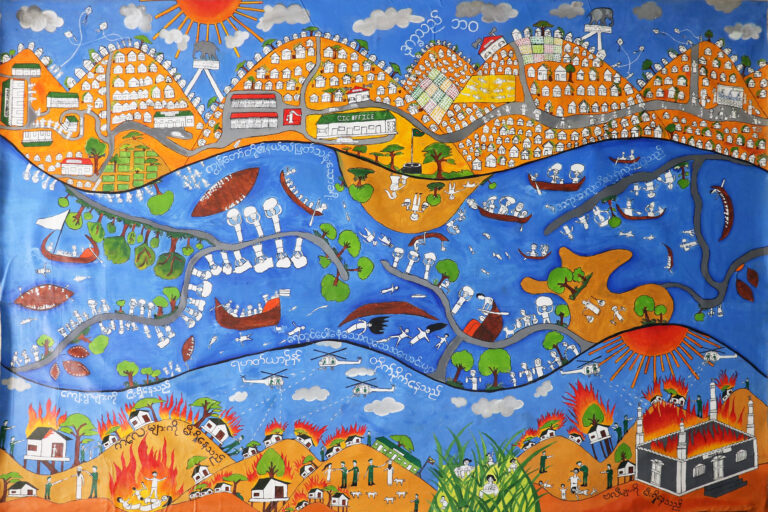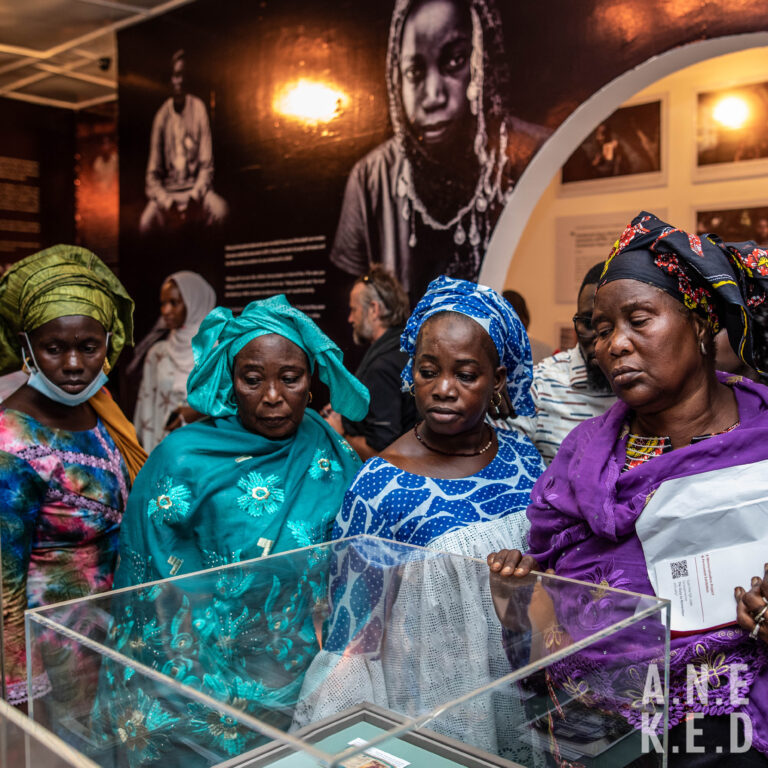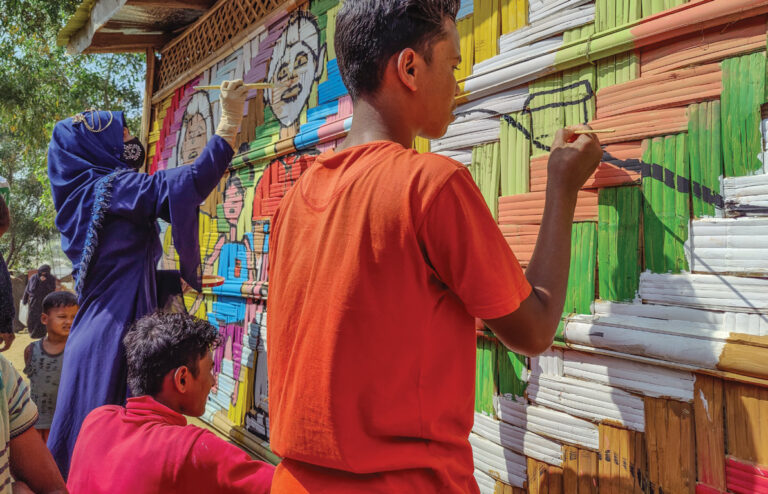Centering Communities, An Exhibition
Over the last decade, the Global Initiative for Justice, Truth and Reconciliation (GIJTR) has transformed the transitional justice field by amplifying victims’ voices and solidifying the participation of survivors, families and local communities in formal and informal transitional justice processes. Core to this transformation has been GIJTR’s use of a multi-disciplinary approach that draws on different modalities of engagement, expression and awareness raising for a multitude of actors conflict and post-conflict settings.

For Spanish
“Centering Communities,” was an in-person exhibition that ran parallel to the conference in Barcelona, and revealed the depth and breadth of GIJTR’s work across a decade of working in multiple countries, with different communities, each grappling with legacies of human rights violations. Items displayed represented multiple deep and trusted connections held by GIJTR with civil society and community-based organizations. The exhibit invited visitors to experience the momentum of GIJTR’s work across 10 years, as captured in the body maps that tell the life stories of survivors and paintings that illustrate the hopes for a peaceful future.
GIJTR strives to expand the conceptual and operational boundaries of the transitional justice field by locating communities at the center of its work. In learning new methods and definitions of achieving transitional justice, GIJTR has become a pioneer of innovative approaches to engaging with human rights violations and in so doing challenges established transitional justice practices to continue to grow and evolve. This is affirmed by innovative practice in multiple areas, including: memorialization as a fifth pillar of transitional justice; transitional justice and atrocity prevention; developing new frontiers in the documentation of human rights violations; mainstreaming psychosocial support in transitional justice; and seeing art as a tool of transitional justice.
NOTE: This virtual description of the “Centering Communities” Exhibition currently serves primarily to provide information to those viewing the exhibit in person in Barcelona and elsewhere. That said, the information presented here will be developed in the coming months to serve as a virtual exhibit replete with images from the exhibit. Those who are not able to see the exhibit in person are encouraged to peruse the information currently provided here, but also check back soon for an updated experience. For more questions, please contact Ashley Nelson, Director of Communications, at anelson@sitesofconscience.org.
The exhibition is organized into four thematic areas:

Each thematic area is connected through four intersecting approaches:
- The Role of Art-Based Methods
- Victim-centered and Gender Responsive Approaches
- Healing, Mental Health & Psychosocial Support
- Atrocity Prevention and Social Cohesion
Through each exhibition node, we invite you to read, reflect and dialogue with fellow exhibition goers. We ask you to observe the connections between the significance of preserving the stories from the Rohingya refugee camps of Dhaka to the Wayúu community of Colombia. We ask you to pause in recognition of the plight of families in Sri Lanka and Gambia in their continued search for their missing and disappeared loved ones. We ask you to hear the calls for justice in Guinea and as they echo through calls peace in Sudan and throughout the world. Finally, we ask you consider the power and strength required of individuals and their communities to reckon with and heal from gross injustices, all while envisioning and believing that a just and peaceful world is possible.
GIJTR is grateful to each community member who has participated in and contributed to processes towards justice, truth and reconciliation. It is this very commitment that leaves all of us with the responsibility to deepen our empathy, allyship and solidarity and remain wholly devoted to centering communities through every action we undertake in the name of justice.
GIJTR thanks all partners that have graciously shared their items to be displayed at this exhibition.

